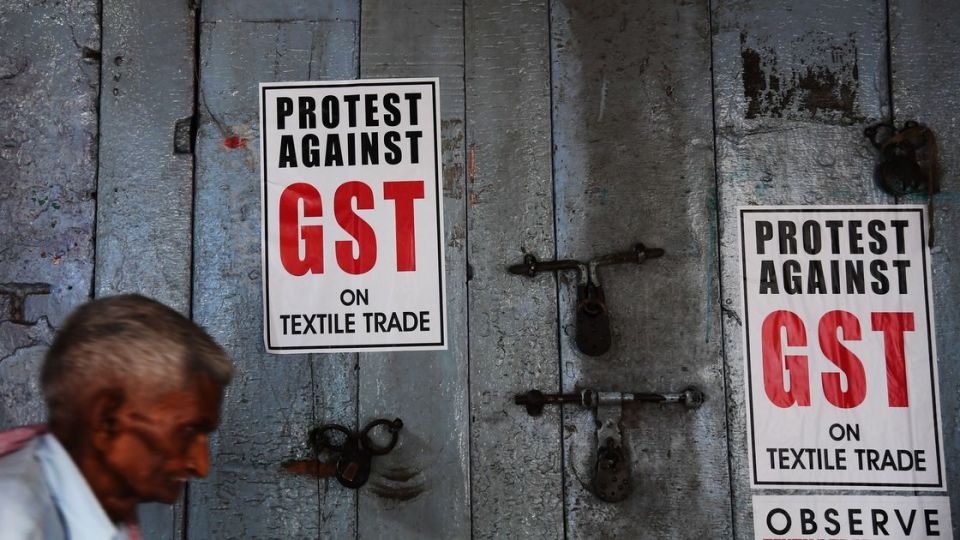July 3, 2018
At the stroke of midnight on June 30, 2017, Prime Minister Narendra Modi rolled out India’s biggest and most complex tax reform – a look back on its pluses and minuses.
India rolled out its biggest tax reform since 1947 – the year it got rid of the British Raj – a year ago on July 1, 2017.
The Goods and Services Tax (GST) had been a long time coming – 13 years to be precise – and was touted as the most significant economic reform unleashed by Narendra Modi after taking over as Prime Minister in 2014.
GST, in its simplest avatar, is a one-tax system for a large country with a population of more than 1 billion. It aims to tidy up the tedious taxation system – with its many layers of comprehensible and incomprehensible cesses and surcharges. However, as most Indians have learned the hard way over the year, GST is not quite the simplistic one-tax system as it was made out to be, but a rather complex tax reform.
A look back at a year of the biggest tax reform and the minuses seem to outweigh the plusses. Two of the biggest takeaways from the new GST regime – the number of registered tax payers has risen phenomenally and tax collections have shot up.
This apart from the obvious benefits such as the elimination of multiple taxes, decreasing prices which have helped the poor and middle classes, increasing transparency and therefore reduction of corruption, and, according to some observers, increased productivity.
However, the failures have been far more – mostly as the reforms were overwhelming and the IT system – the goods and services tax network (GSTN) portal – was ill-equipped to support the process.
A year later, almost everyone is in agreement that India cannot have a single rate GST. The six GST slabs – 0%, 3%, 5%, 12%, 18% and 28% – have compounded the woes of taxpayers. Refunds are delayed and a return filing system is not in place yet.
Within a year too many changes have been introduced – some for the benefit of taxpayers – yet all this has added to the confusion. According to a report, there have been more than 400 notifications, 100 circulars and FAQs issued so far. Products and services have been moved from one tax bucket to another, the list under 28% tax bracket has been drastically cut, the refund filing mechanism, the due dates and forms have been changed several times.
And there is talk of more changes in the future.
The Background
When the GST was endorsed by Parliament in 2016, it was hailed as a great move to make India a truly single market. However, two years on, businessmen are still nervous, and the government in an overdrive to defend and fix apparent loopholes.
Prime Minister Modi has had to deal with bad press all along. Reams have been written zeroing in on the flaws of GST with many claiming the smooth implementation of the new tax regime can only be a miracle.
So will GST – the mother of all taxes – help India, a US$2 trillion economy, one of Asia’s biggest, become a truly single market?
India’s 29 states and seven federally administered union territories had a different tax policy before the GST was rolled out. Theoretically speaking, all of these states and territories were covered by a common taxation system. However, bringing them all under a single tax umbrella – a change the Modi government describes as “transformational” – is far from easy.
There are problems aplenty with the taxation system. The prime one being more politicians, than tax experts, are the masterminds behind the mammoth project. Even before the taxes were unveiled the government was forced to abandon its original plan and agree to exclude high revenue tax products from the GST basket – crude oil, natural gas, aviation fuel, diesel and petrol – for the initial years, as the states were unwilling to give up their taxation powers.
After waxing eloquent of “the states and Centre pooling their powers and sovereignty”, the then finance minister, Arun Jaitley, spoke about the long-term benefits – a stark reminder of the times when high-value bank notes were scrapped in November 2016 and the government told citizens to focus on the future benefits.
Around 160 countries in the world have some form of GST or value added tax. However, unlike other countries where GST translates as one country, one tax, India has six slabs to tax goods and services ranging from zero to 28 per cent, with most commodities falling between 12 and 18 per cent. Luxurious products such as cosmetics are taxed the highest – at 28 per cent.
While GST replaced the heady concoction of national and local levies and duties, initially businesses had to file returns three times a month and 37 times annually. Reason enough to give businessmen a headache. And reason enough to make tax consultants and tax lawyers smile – perhaps the only ones smiling in these taxing times.


